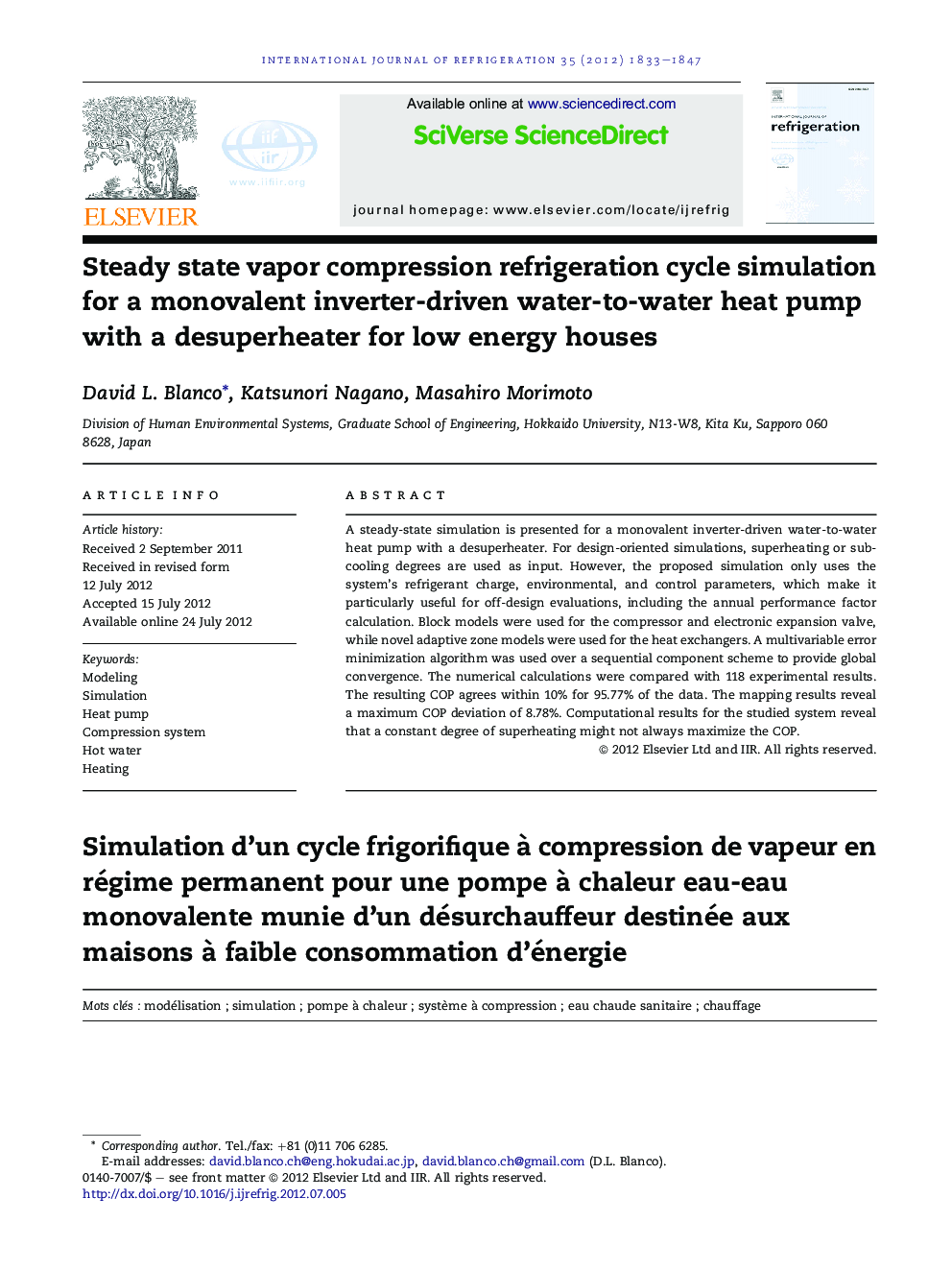| Article ID | Journal | Published Year | Pages | File Type |
|---|---|---|---|---|
| 787079 | International Journal of Refrigeration | 2012 | 15 Pages |
A steady-state simulation is presented for a monovalent inverter-driven water-to-water heat pump with a desuperheater. For design-oriented simulations, superheating or subcooling degrees are used as input. However, the proposed simulation only uses the system's refrigerant charge, environmental, and control parameters, which make it particularly useful for off-design evaluations, including the annual performance factor calculation. Block models were used for the compressor and electronic expansion valve, while novel adaptive zone models were used for the heat exchangers. A multivariable error minimization algorithm was used over a sequential component scheme to provide global convergence. The numerical calculations were compared with 118 experimental results. The resulting COP agrees within 10% for 95.77% of the data. The mapping results reveal a maximum COP deviation of 8.78%. Computational results for the studied system reveal that a constant degree of superheating might not always maximize the COP.
► A new steady-state simulation for a monovalent water-to-water heat pump is presented. ► Appropriate variable limits permit to apply advanced algorithms for convergence. ► Combined space heating and DHW production, and other modes, can be simulated. ► It is particularly useful for off-design evaluation such as annual performance factor. ► A constant superheating degree control strategy might be detrimental for the system.
